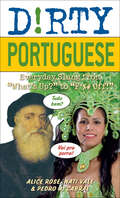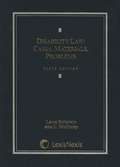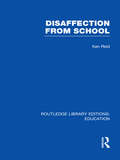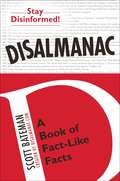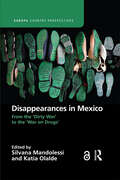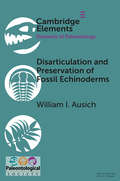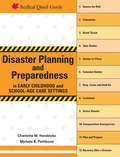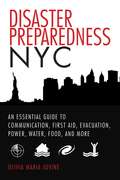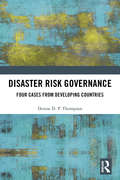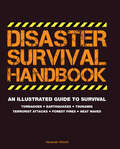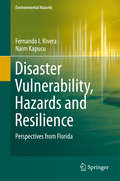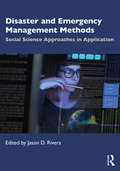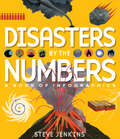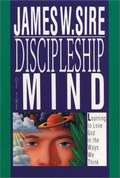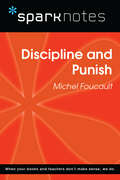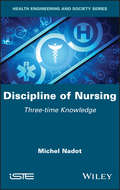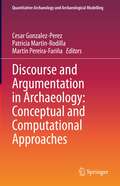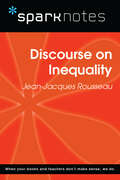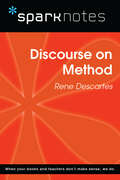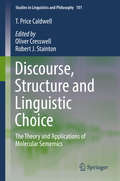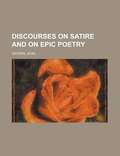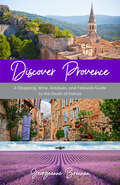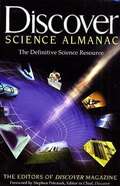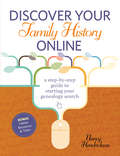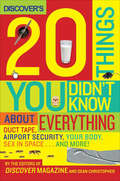- Table View
- List View
Dirty Portuguese: Everyday Slang from "What's Up?" to "F*%# Off!" (Dirty Everyday Slang)
by Pedro A Cabral Alice Rose Nati ValeLearn cool slang, funny insults and all the words they didn’t teach you in class with this comprehensive guide to dirty Portuguese.You’ve taken Portuguese lessons and learned all kinds of useful phrases. You know how to order dinner, get directions, and ask for the bathroom. But what happens when it’s time to drop the textbook formality? To really know a language, you need to know its bad words, too. You need Dirty Portuguese.From common slang and insulting curses to explicit sexual expressions, this volume teaches the kind of Portuguese heard every day on the streets of Brazil. Learn to sound like a native speaker with phrases like:What’s up? — Tudo bem?Are those fake boobs? — Você tem silicone no peito?I need to take a piss. — Preciso mijar.That goalie is so weak. — Esse goleiro é uma mãe.Shit’s about to go down! — O coro vai comer!I’m smashed. — Tô bebum.Let’s fuck like animals. — Vamos trepar como animais.
Disability Law: Cases, Materials, Problems (Fifth Edition)
by Laura F. Rothstein Ann C. McginleyDisability Law: Cases, Materials, Problems takes a broad approach to understanding how disability discrimination laws apply to the kinds of cases attorneys, policymakers, and judges are likely to face. The new Fifth Edition adds analysis and discussion of the ADA Amendments Act throughout the book. It reorganizes and adds new cases and materials in the employment law chapter, including cases on harassment and retaliation based on disability. It also pays more attention to procedural issues (burden of proof), remedies and defenses, litigation and dispute resolution, and insurance. It adds a problem-based approach with chapters and sections of chapters beginning with a hypothetical scenario to be used as a basis for applying the substantive law. It also adds expanded Notes at the end of each section.
Disaffection From School (Routledge Library Editions: Education)
by Stephen Hester David H Hargreaves Frank J MellorA large number of pupils are, or are liable to become, disaffected with their schooling. In this comprehensive account of the problem, Ken Reid suggests that school can and should do much more to prevent and overcome disaffected behaviour, as manifested by such factors as absenteeism, disruption and underachievement. The book covers disruptive behaviour in its broader context and examines the search for an explanation within schools themselves. Formal and multidisciplinary approaches to the problem are also fully treated. The author has drawn on his considerable school and research experience and the book is well illustrated with examples and case histories. Ken Reid argues that questions about attitudes and approaches in teaching and in pastoral care provoke a continued challenge, and stresses that if such questions are not faced squarely the long-germ prognosis for secondary education in Britain may be bleak. Teachers in training and all those involved in the education and welfare of difficult or disadvantaged children, especially teachers, heads and social workers, will find Disaffection from School both challenging in its analysis and helpful in its suggestions.
Disalmanac
by Scott BatemanHave you ever wanted to dazzle your friends with your command of history, science, and other important matters? No? Then this is the book for you. Ronald Reagan once famously said, "Facts are stupid things. ” The book you hold in your hands will prove it. Did you know that Albuquerque’s population is 78% chupacabra and 22% victim? Do you know why civilization started in Mesopotamia, and not Boise? And did you know the reason you shouldn’t stare at the Sun is that it will probably shoot you and turn your skin into a rain poncho? Disalmanac is a handy compendium of false facts covering everything from world history and economics to pop culture, sports, and more. All of which are incorrect, but try not to be so judgy about it. But wait, there’s more. You’ll also discover a generous supply of Random Bonus Facts from the likes of Michael Ian Black, Neil Gaiman, Wil Wheaton, Weird Al Yankovic, and other luminaries who may or may not have a good grasp of the facts. .
Disappearances in Mexico: From the 'Dirty War' to the 'War on Drugs' (Europa Country Perspectives)
by Silvana MandolessiThis volume presents an interdisciplinary analysis of the practice of disappearances in Mexico, from the period of the so-called ‘dirty war’ to the current crisis of disappearances associated with the country’s ‘war on drugs’, during which more than 80,000 people have disappeared. The volume brings together contributions by distinguished scholars from Mexico, Argentina and Europe, who focus their chapters on four broad axes of enquiry. In Part I, chapters examine the phenomenon of disappearances in its historical and present-day forms, and the struggles for memory around the disappeared in Mexico with reference to Argentina. Part II addresses the political dimensions of disappearances, focusing on the specificities that this practice acquires in the context of the counterinsurgency struggle of the 1970s and the so-called ‘war on drugs’. The third section situates the issue within the framework of human rights law by examining the conceptual and legal aspects of disappearances. The final chapters explore the social movement of the relatives of the disappeared, showing how their search for disappeared loved ones involves bodily and affective experiences as well as knowledge production. The volume thus aims to further our understanding of the crisis of disappearances in Mexico without, however, losing sight of the historic origins of the phenomenon.
Disarticulation and Preservation of Fossil Echinoderms: Recognition of Ecological-Time Information in the Echinoderm Fossil Record (Elements of Paleontology)
by Willian I. AusichThe history of life on earth is largely reconstructed from time-averaged accumulations of fossils. A glimpse at ecologic-time attributes and processes is relatively rare. However, the time-sensitive and predictability of echinoderm disarticulation makes them model organisms to determine post-mortem transportation and allows recognition of ecological-time data within paleocommunity accumulations. Unlike many other fossil groups, this has allowed research on many aspects of echinoderms and their paleocommunities, such as the distribution of soft tissues, assessment of the amount of fossil transportation prior to burial, determination of intraspecific variation, paleocommunity composition, estimation of relative abundance of taxa in paleocommunities, determination of attributes of niche differentiation, etc. Crinoids and echinoids have received the most amount of taphonomic research, and the patterns present in these two groups can be used to develop a more thorough understanding of all echinoderm clades.
Disaster Planning and Preparedness in Early Childhood and School-Age Care Settings
by Charlotte M. Hendricks Michele B. PettiboneAll adults who are responsible for the care of children should be prepared for disasters. This guide provides caregivers, educators, and program staff with preparation tips and step-by-step responses to disaster situations that are based on national standards and best practices to keep children safe.
Disaster Preparedness NYC: An Essential Guide to Communication, First Aid, Evacuation, Power, Water, Food, and More before and after the Worst Happens
by Olivia Maria Jovine Vicki FordIf you live in New York City, you know this great city has seen and recovered from many disasters of every scale. But if the next Hurricane Sandy, 9/11, blizzard, power outage, fire, or heat wave hits your borough, would you be ready? With Disaster Preparedness NYC, learn what it takes to be prepared and react to disaster.This book is the go-to guide for emergency preparedness in New York City, from before (planning and packing and practicing) to during (making sure you have all the resources you need to survive for disasters that can last for days, and that you can communicate with those included in your emergency plan) to after. Find out how New York will respond to disaster, from the NYPD's managing of traffic to Hunts Point--which, few know, is one of the world's largest food distribution centers and a crucial part of long-term disaster survival in the tristate area.Included are checklists for home emergency kits and "go bags" when you seek shelter outside your home: first aid, important documents, medications, food and water, and more. But disaster preparedness isn't just about what to pack. The best emergency planning is about people. If you're responsible for children, the sick, the elderly, the disabled, or pets, your emergency plan needs to be tailored to factor in each individual's limitations and special considerations, and Disaster Preparedness NYC covers preparing everyone you care about for disaster situations.You're probably familiar with what to do in a fire, flood, or power outage in your own home, but can you say the same if disaster hits when you're anywhere else--on the subway, on the sidewalk, or at the office? No matter what the emergency or where you are when it occurs, be prepared with Disaster Preparedness NYC. Appendixes include forms that summarize important medical and legal information, kid-friendly worksheets, and neighborhood maps of emergency information such as evacuation routes, flood zones, major supply stores, and more.
Disaster Risk Governance: Four Cases from Developing Countries
by Denise D. ThompsonDisaster Risk Governance offers the first extensive engagement with disaster risk governance in the Caribbean and Sub-Saharan Africa. In the last decade and a half Kenya, Jamaica, Dominica, and Zanzibar have all suffered massive destruction from disasters caused by natural hazards. Despite the tremendous investments in disaster risk reduction (DRR), disasters have wiped out the developmental gains of these countries. In this book, Denise Thompson argues that disaster risk governance (DRG) as a practical and academic matter has not been given the attention it deserves, and as a result, this neglect has undermined the time, money and resources invested in DRR in developing countries since the late 1970s and early 1980s. Thompson proposes that properly conceptualizing DRG based on context will help to address some of the deficiencies. Consequently, DRG needs to become a central focus, particularly for developing countries. Written with real-life implications for developing countries, Disaster Risk Governance is perfectly suited for practitioners and researchers in area studies, disaster risk reduction and disaster governance, as well as students of disaster studies.
Disaster Survival Handbook: An Illustrated Guide to Survival
by Alexander StilwellA practical and illustrated guide to getting through all types of life-threatening situations.Are you ready for the big one, whether it’s an earthquake, a hurricane, or a monster snowstorm? Disaster Survival Handbook will help you prepare for the unexpected—from stocking up on provisions to hunkering down in a safe area to administering basic first aid. The power of nature means that disasters are inevitable and that surviving them is all about preparation. With this useful illustrated guide, you’ll be able to take the steps necessary to keep your family and loved ones safe in the face of danger. Each chapter includes true stories of people who found themselves in the middle of a precarious situation . . . and how they managed to survive.
Disaster Vulnerability, Hazards and Resilience
by Naim Kapucu Fernando I. RiveraThis monograph provides valuable lessons in building disaster resilience for rural communities and beyond. With a focus on Florida, the authors present a comprehensive review of the current debates surrounding the study of resilience, from federal frameworks, state plans and local initiatives. They also review evaluation tools and feature first-hand accounts of county emergency managers as well as non-profit and community groups on key issues, including perspectives on vulnerable groups such as the elderly, children and farm workers. Readers will find insightful answers to such questions as: How can the concept of resilience be used as a framework to investigate the conditions that lead to stronger, more sustainable communities? What factors account for the variation across jurisdictions and geographic units in the ability to respond to and recover from a disaster? How does the recovery process impact the social, political and economic institutions of the stricken communities? How do communities, especially rural ones, collaborate with multiple stakeholders (local, regional, state, national) during the transition from recovery to resilience? Can the collaborative nature of disaster recovery help build resilient communities'. The primary audiences of this book are scholars in emergency and crisis management, planning and policy, disaster response and recovery, disaster sociology and environmental management and policy. This book can also be used as a textbook in graduate and advanced undergraduate programs / courses on disaster management, disaster studies, emergency and crisis management, environmental policy and management and public policy and administration.
Disaster and Emergency Management Methods: Social Science Approaches in Application
by Jason D. RiveraFind the answers to disaster and emergency management research questions with Disaster and Emergency Management Methods. Written to engage students and to provide a flexible foundation for instructors and practitioners, this interdisciplinary textbook provides a holistic understanding of disaster and emergency management research methods used in the field. The disaster and emergency management contexts have a host of challenges that affect the research process that subsequently shape methodological approaches, data quality, analysis and inferences. In this book, readers are presented with the considerations that must be made before engaging in the research process, in addition to a variety of qualitative and quantitative methodological approaches that are currently being used in the discipline. Current, relevant, and fascinating real-world applications provide a window into how each approach is being applied in the field. Disaster and Emergency Management Methods serves as an effective way to empower readers to approach their own study of disaster and emergency management research methods with confidence.
Disasters by the Numbers: A Book of Infographics
by Steve JenkinsAn amazing look at Earth&’s natural disasters as seen through numbers, facts, and stunning infographics from Caldecott Honor–winning author-illustrator Steve Jenkins! From Caldecott Honor–winning author-illustrator Steve Jenkins comes an in-depth look at the world's natural disasters, broken down into four distinct categories: earth, weather, life, and space. From timelines of causes and outcomes of each disaster, graphs highlighting humans' effect on the earth, and a text teeming with fresh, unexpected, and accurate information ready for readers to easily devour, Disasters by the Numbers is unmatched and sure to wow fans old and new.
Discipleship of the Mind: Learning to Love God in the Ways We Think
by James W. SireChristians who are serious about their faith want to love God with all that they are -- heart and mind and strength. Books abound on the devotional life, on commitment, on evangelism and practical Christian living, but few take up what it means to love God with our minds. How do we learn to honor God in the ways we think? James Sire blazes a trail for Christians concerned about the discipleship of our minds. After looking at the attitudes toward God and ourselves necessary for the journey, he introduces us to the basics of the Christian world view. Separate chapters discuss the foundations of knowledge and the relationship between knowing and doing. With an eye to the practical, Sire offers specific suggestions on getting to know what is good and getting to know the world. He also provides valuable insights on how Christians might approach various academic disciplines as disciples of Christ. Here is a book for all who desire to love God with their minds.
Discipline and Punish (SparkNotes Philosophy Guide)
by SparkNotesDiscipline and Punish (SparkNotes Philosophy Guide) Making the reading experience fun! SparkNotes Philosophy Guides are one-stop guides to the great works of philosophy–masterpieces that stand at the foundations of Western thought. Inside each Philosophy Guide you&’ll find insightful overviews of great philosophical works of the Western world.
Discipline of Nursing: Three-time Knowledge
by Michel NadotNursing students' access to higher education does not mark the beginning of basic scientific research into this discipline, and it is now a struggle for this fact to remain visible. Prejudices, misrepresentations and myths mislead nurses about the origins of nursing knowledge. Discipline of Nursing allows us to compare significant nursing figures: Florence Nightingale (Great Britain) and her equally valuable counterpart Valérie de Gasparin-Boissier (Switzerland). The two distinct training models proposed by these illustrious women have retained their relevance into the 21st Century since as early as 1859. The discipline of nursing seems to be arranged in almost geological layers of knowledge that we can distinguish by studying the traditions of nursing language. This book aims to provide a better understanding of the nature of services provided by nurses worldwide.
Discourse and Argumentation in Archaeology: Conceptual and Computational Approaches (Quantitative Archaeology and Archaeological Modelling)
by Patricia Martin-Rodilla Cesar Gonzalez-Perez Martín Pereira-FariñaThis book covers the topic of discourse and argumentation in archaeology with an aim to serve the archaeology community. The book presents discourse and argument analysis approaches and techniques in an affordable manner and applied to archaeological situations. It focuses on techniques and approaches that can be applicable to multiple situations, periods and cultures. The book begins with an introduction to discourse and argumentation analysis as a general field and also as an auxiliary technique to archaeology. The work includes conceptual applications, ranging from causality, ontological connections, vagueness, social production of discourse and public debates. The work also devotes a section to computational approaches and describes the specifics of some well-known families of algorithms such as lexical processing, information extraction or sentiment analysis. The conclusion comments on the future and which reflects on the previous chapters and discusses how the presented techniques and approaches should be adapted or improved for easier and more powerful application to archaeology. Contributing authors bring perspectives from archaeology, linguistics, and computer science.
Discourse on Inequality (SparkNotes Philosophy Guide)
by SparkNotesDiscourse on Inequality (SparkNotes Philosophy Guide) Making the reading experience fun! SparkNotes Philosophy Guides are one-stop guides to the great works of philosophy–masterpieces that stand at the foundations of Western thought. Inside each Philosophy Guide you&’ll find insightful overviews of great philosophical works of the Western world.
Discourse on Method (SparkNotes Philosophy Guide)
by SparkNotesDiscourse on Method (SparkNotes Philosophy Guide) Making the reading experience fun! SparkNotes Philosophy Guides are one-stop guides to the great works of philosophy–masterpieces that stand at the foundations of Western thought. Inside each Philosophy Guide you&’ll find insightful overviews of great philosophical works of the Western world.
Discourse, Structure and Linguistic Choice: The Theory and Applications of Molecular Sememics (Studies in Linguistics and Philosophy #101)
by Robert J. Stainton T. Price Caldwell Oliver CresswellThis volume presents eight papers and a draft monograph by T. Price Caldwell on topics in linguistics, semiotics and philosophy of language. From the beginning of his professional career onwards, Caldwell wrote short fiction and poetry, and he taught English literature. The relevance to these of philosophy of language, semiotics and certain areas of linguistics increasingly caught his interest. This book presents the fruits of this later work. Of the papers included here, two are abstract and theoretical, focusing on linguistic methodology and Caldwell’s overarching views on the nature of meaning-in-context. His position here, which he called Molecular Sememics, echoes early Structuralism and Functionalism, but addresses shortfalls in each. Two other papers apply the method and theory to topics within semantics and pragmatics, including especially the structuring of discourse. The remaining four papers connect Caldwell’s theoretical insights to his life-long interests in fiction and pedagogy. The monograph – which Caldwell was left unfinished due to illness – aims to present as a single intellectual package the theory and the applications.
Discourses on Satire and on Epic Poetry
by John DrydenAn heroic poem (truly such) is undoubtedly the greatest work which the soul of man is capable to perform. The design of it is to form the mind to heroic virtue by example; it is conveyed in verse that it may delight while it instructs. The action of it is always one, entire, and great. The least and most trivial episodes or under- actions which are interwoven in it are parts either necessary or convenient to carry on the main design.
Discover Provence: A Shopping, Wine, Antiques, and Festivals Guide to the South of France
by Georgeanne BrennanVisit the Most Popular Destinations in Provence, France#1 New Release in Flowers and Bed & BreakfastDiscover why Provence, France is the best place for your next wanderlust-fueled quest and lose yourself to sunny beaches, lush vineyards, and historic architecture.Take an unforgettable tour of this treasured southern region of France. Soon to be your favorite of all tour guide books, author Georgeanne Brennan uses her insider’s view to take you on the getaway of a lifetime. With engaging text and gorgeous photos, she paints the perfect picture of the many gems of Provence. Beauty abounds as you travel through the sunny Côte d’Azur to the mountains of Haute Provence; to lavender, poppy and wheat fields; through bustling markets; to fisherman-filled harbors; over vine-covered hills; and into ancient castle ruins.A guide for travelers, wine lovers, dreamers, and anyone interested in Provence, France.Discover Provence is also for those who want to be a part of something picturesque and historically significant. One of the most visited areas of the world, Southern France is famous for its beautiful views, flavorful foods, and opulent French wines. Turn the pages of Discover Provence to immerse yourself in this magical region.Inside this perfectly curated Provence book, you’ll find:Indispensable driving tips for stress free way-findingAn insightful guide to understanding French wineIntimate knowledge of Provence’s villages and their traditionsIf you enjoyed travel destination books such as A Year in Provence, Rick Steves France, or Adventures on the Wine Route, then you’ll love Discover Province.
Discover Science Almanac
by Bryan Bunch Jenny TesarThe first and only science reference book of its kind features the latest breakthroughs in science--from technology to medicine. 50 illustrations.
Discover Your Family History Online: A Step-by-Step Guide to Starting Your Genealogy Search
by Nancy HendricksonYour Guide to Online Genealogy The internet has made millions of records available to search any time, anywhere. Start finding your ancestors with just a few strokes of a keyboard using the detailed instruction in this book. Inside you'll find: An overview of where and how to start your family history research Detailed descriptions of the best online databases for family historians Hundreds of helpful websites to further your research Step-by-step search instructions to help you find exactly what you're looking for Chapters dedicated to finding specific records, including birth, marriage and death; census; military; land; and immigration Case studies that apply key concepts to real-life searches Ideas for connecting with fellow researchers and distant relatives through social media, blogging and newsletters Special resources for researching American Indian, African-American and Jewish ancestors Plus access to bonus online video demonstrations If you're curious about who's hanging out in your family tree, there's never been a better time to find out. Get this book, get online and get started today!
Discover's 20 Things You Didn't Know About Everything: Duct Tape, Airport Security, Your Body, Sex in Space . . . and More!
by Discover MagazineHow much do you know about . . .ObesitySleepMeteorsAliensBeesSperm banks Sex in spaceDuct tapeGermsAirport securityDeathAncient weaponsRatsThe InternetBirthWeatherMilkMosquitoesYour bodySpace disastersDISCOVER'S 20 Things You Didn't Know About Everything is the first book written by the editors of the award-winning DISCOVER magazine. Based on DISCOVER'S most eagerly awaited monthly column, "20 Things You Didn't Know About," this original book looks at many popular—and sometimes unexpected—topics in science and technology, and reveals quirky, intriguing, and little-known facts.Whether you're just curious or think you already know everything, this book is guaranteed to expand your mind.
